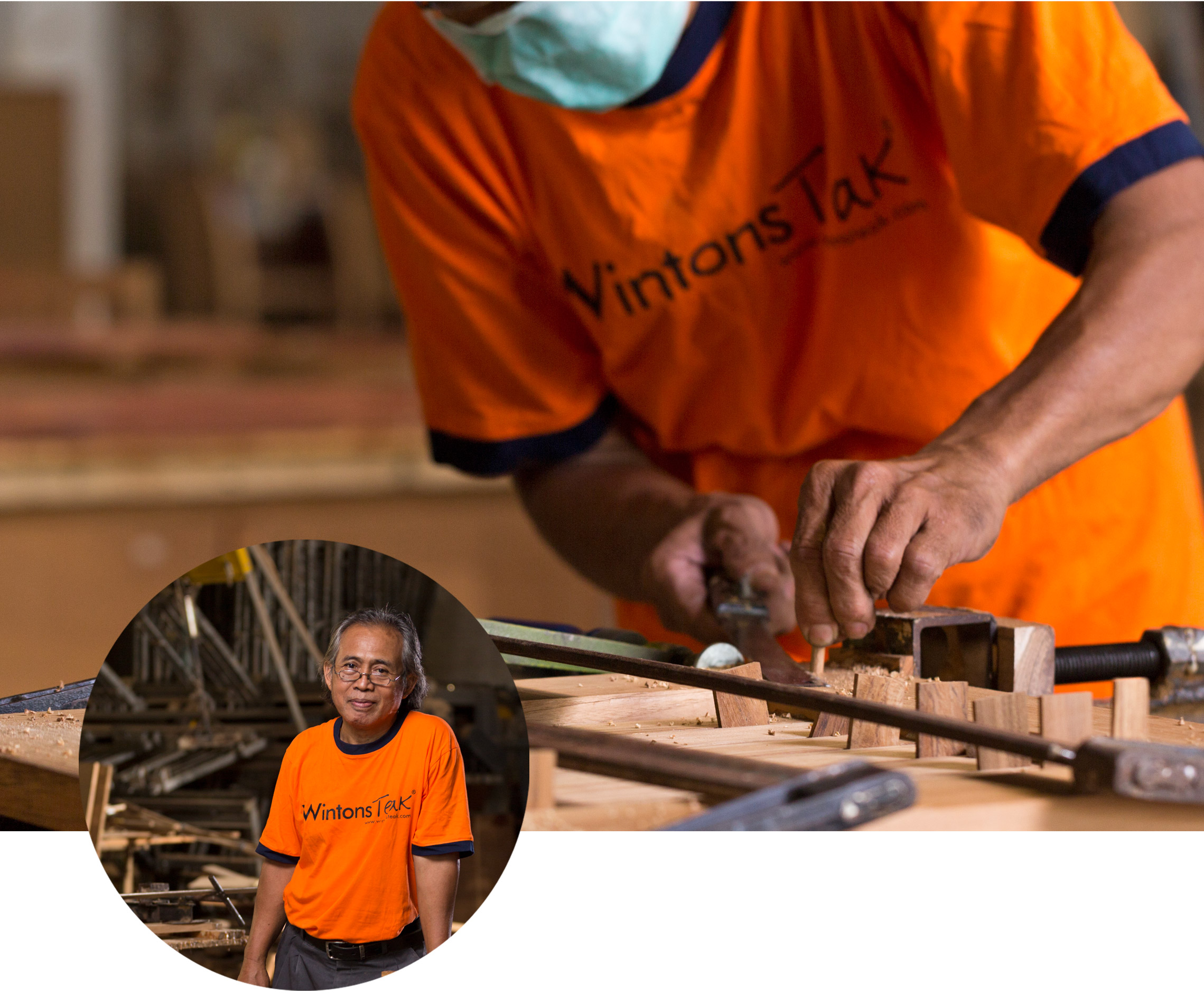

Weaving is a craft that can only be learnt through years of hands-on experience. Only a master craftsman can perform intricate weavings. Well-woven outdoor furniture should have no openings and gaps in the weaving unless intended and with the straps firmly secured onto the frame.
METALWORK
ALL IN THE DETAILS
The best way to assess the build quality of any metalwork is to closely observe the welded joints. Properly welded materials should have a smooth and even thickness along the joints. The smooth and even finish is achieved as a result of grinding and polishing to remove any unappealing weld residue.
Your outdoor furniture should be of a well-built standard in quality for longevity. This would mean that there should not be any dents, with smooth and uniform brushed finishes on stainless steel.


Arisandi
6 years of experience
Senior Apprentice Welder
“In metalwork, you really need to know everything inside and out. Everything from cutting, welding, adjusting and polishing is all related. The challenge is then to be able to practice all this, day-in and day-out for mass-scale production. We need to consistently deliver quality in every joint welded, every component we polish and every piece we adjust. All-in-all it took me 5 years to fully master these various techniques and to do them en masse.”
WOODWORKING
QUALITY THROUGH EXPERIENCE
The mark of quality teak joinery is not only in terms of tight-fitting joints but also a silky smooth finish. Our teak outdoor furniture is finely sanded by hand and then buffed with wool in order to achieve the silky smooth finish of natural A-grade teak. There are no additional, unnecessary finishing materials such as oil, wax or varnish that is applied to the surface of the wood.
It is only with the years of experience that our master craftsmen are able to deliver this level of quality joinery. The true quality of outdoor joinery can only be observed through the test of time, after years of use and exposure to the elements.


Djuwariyanto
18 years of experience
Master Assembler
“Many young apprentices have the necessary training, which exposes them to various techniques and equips them with the required skills. I see that my job is to make them practice those skills with a quality-first mindset. This means not taking shortcuts, working with your hands and having your mind sharp and focused on the very thing that you are doing. In short, it’s not that they don’t know how things are done, they just need to do it consistently better.”
